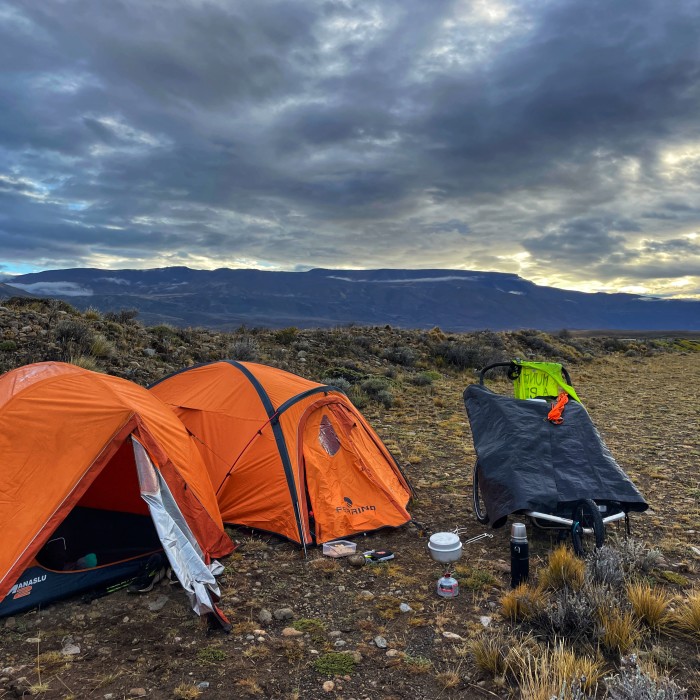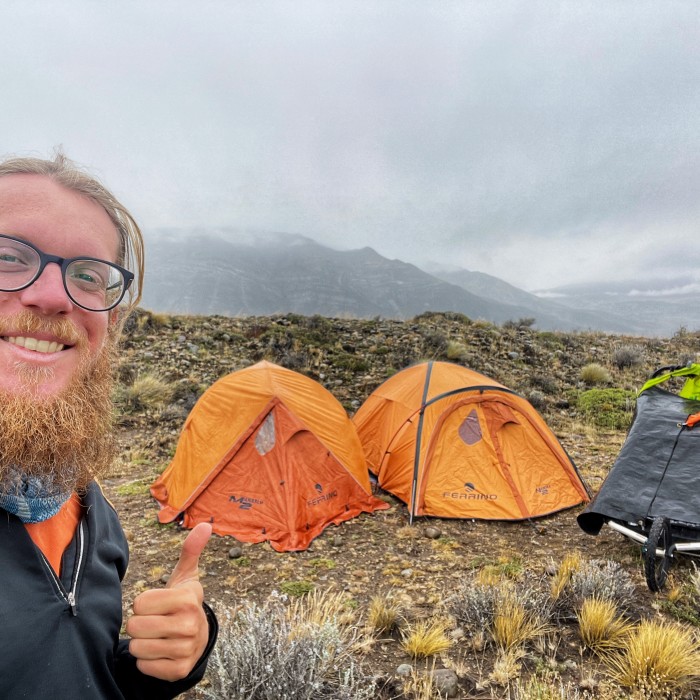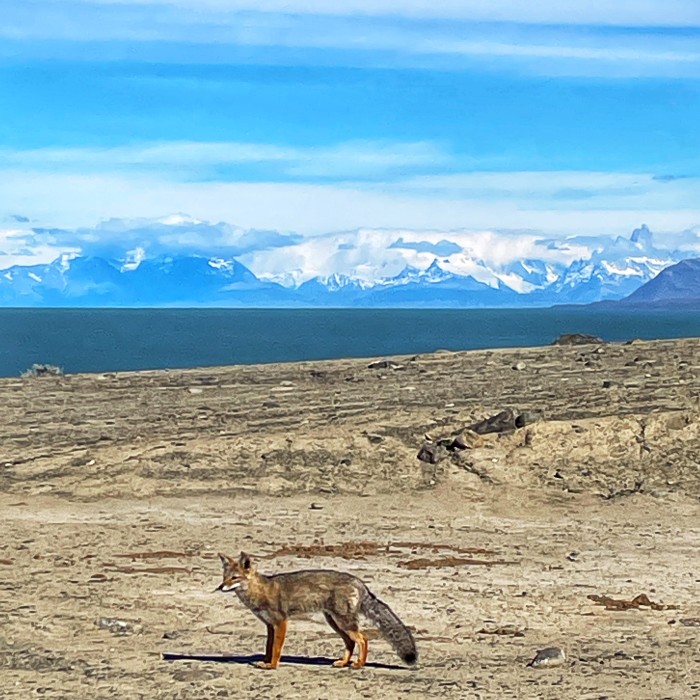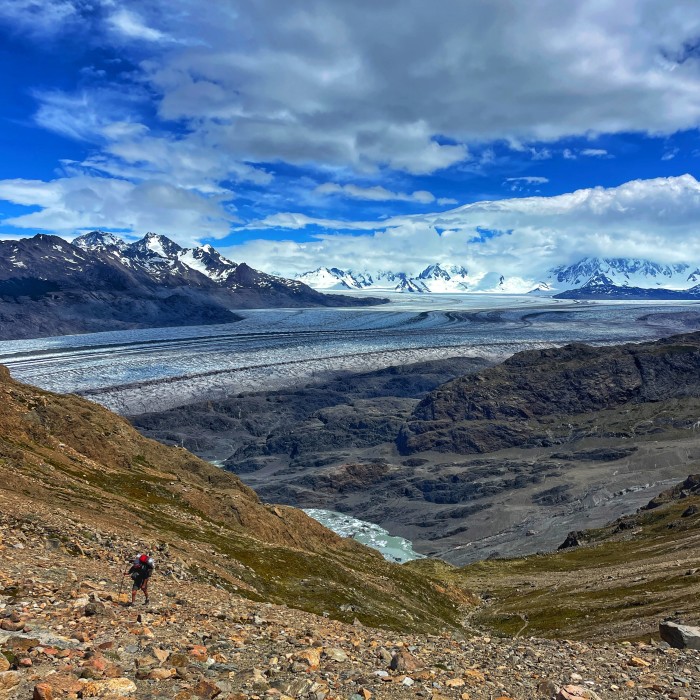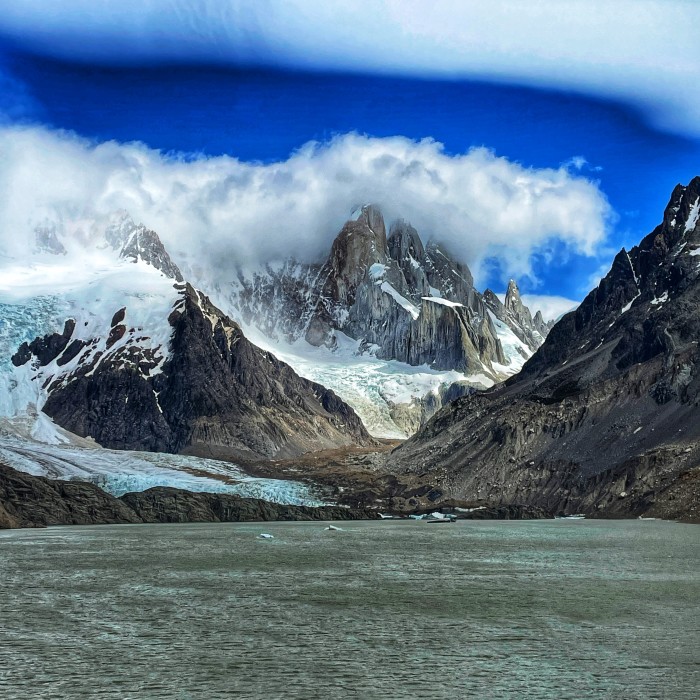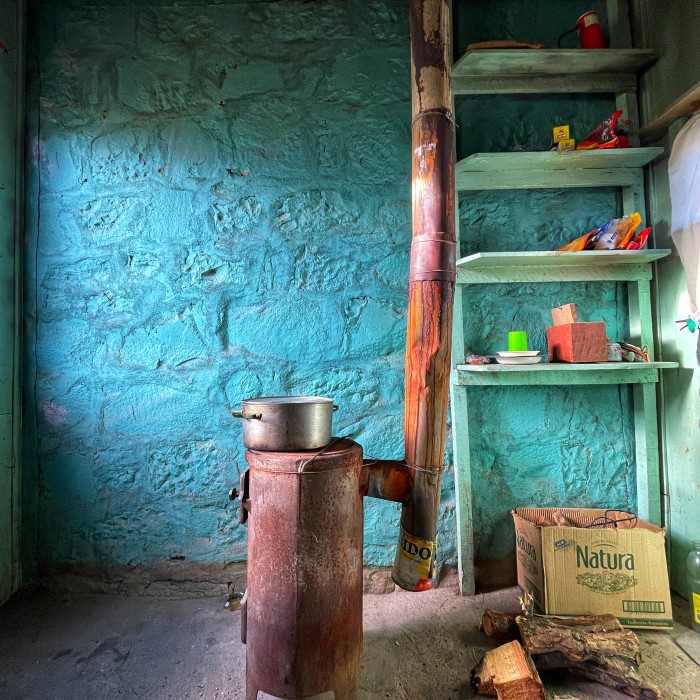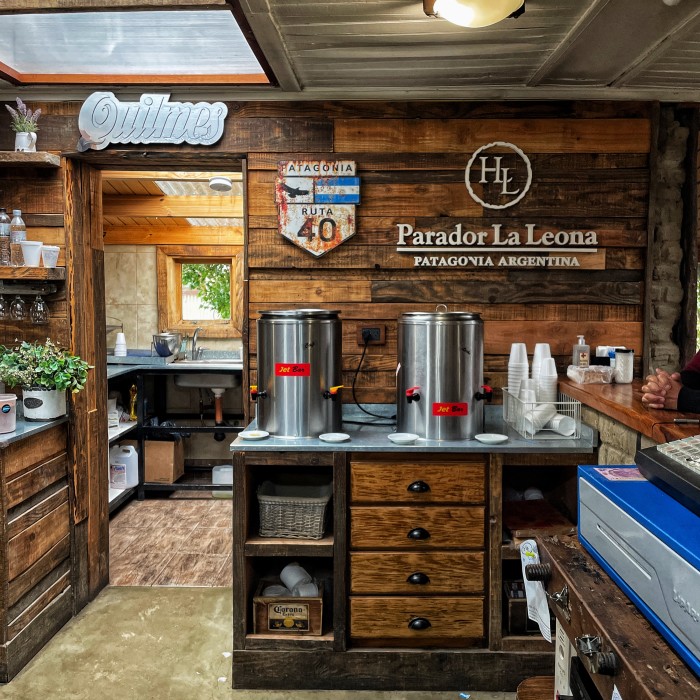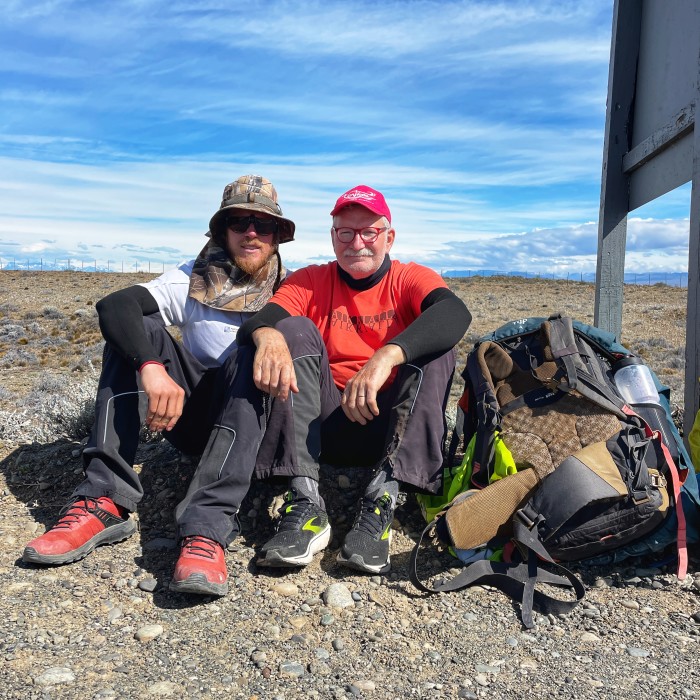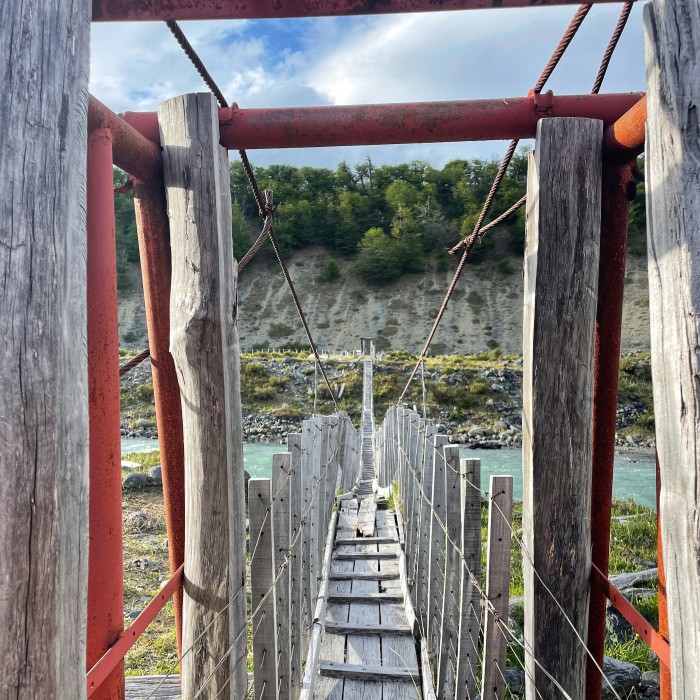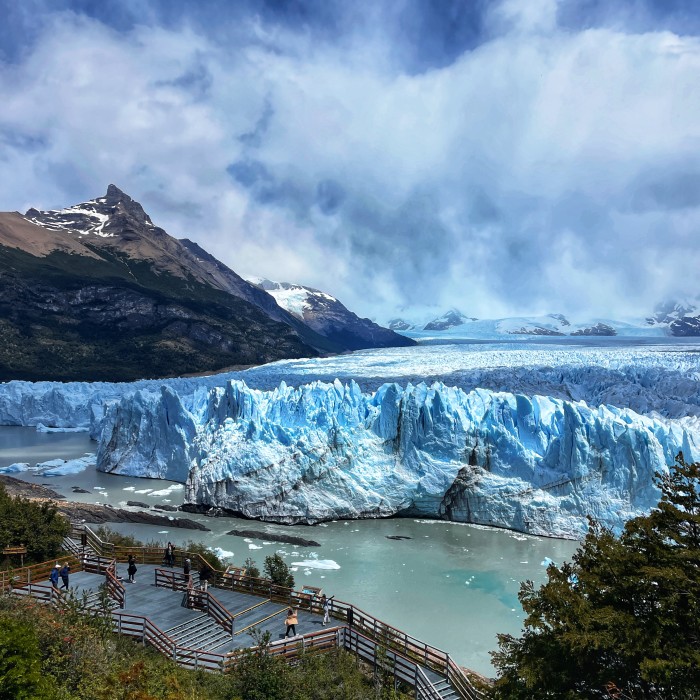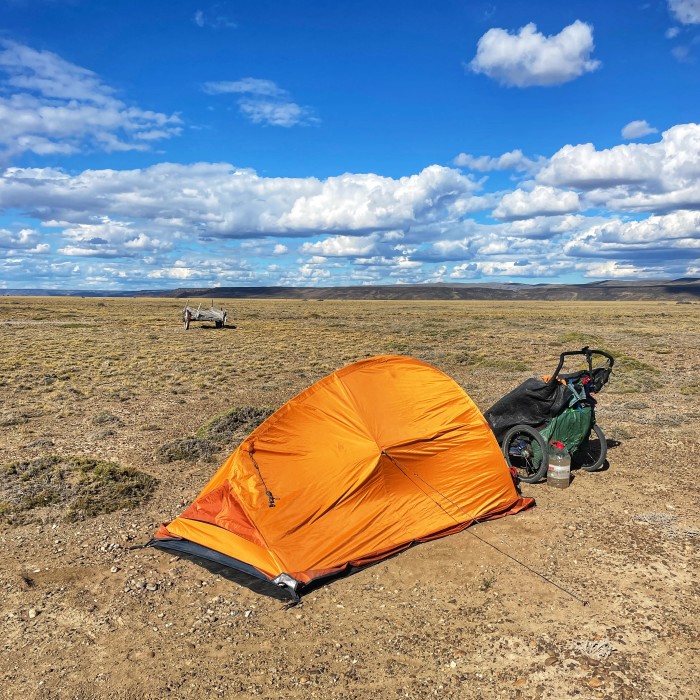
Argentina on the road, with Pieroad
My nerves are shattered. Behind me, a sheep footbridge runs from one side of the Carreras River to the other, a hundred metres of suspended breath that I had to pass five times to transport Ezio and the equipment from one bank to the other. Now I stand in a scree just past the bridge, exhausted, and there is no clue as to which path to follow. I have barely covered seven kilometres in the last six hours and night is falling over no man's land, preventing me from moving forward. The clouds are condensing on the horizon, I can hear the pattering of the first icy drops of water hitting my jacket. Although exhausted, I have to set up camp before the storm arrives. With a clinical eye I choose the flattest rectangle, make my way through the stones, spread a black plastic sheet to insulate myself from the ground and finally set up the house that has protected me from the wind and rain for the last 8,000 kilometres: the Manaslu 2 tent from Ferrino, the orange lifeline in which I will find refuge again tonight.
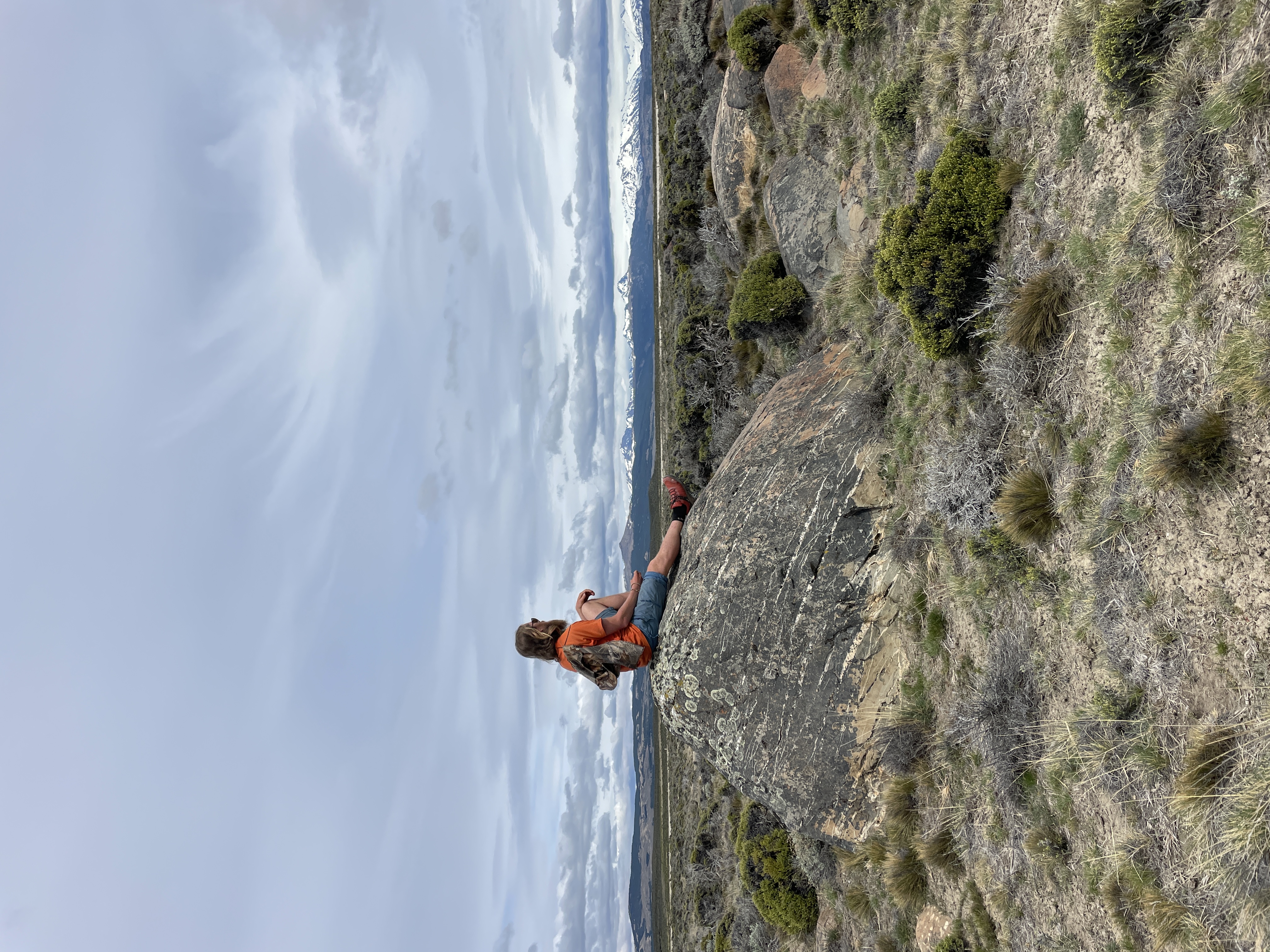
I am crossing the border between Chile and Argentina at the Mayer Pass. Once on the Carretera Austral, I was counting on leaving the country via the Candelario Mancilla Pass, but despite the fact that it is November 2022, the border is still closed from the time of covid - damned bureaucratic delays... The only viable alternative, considering the timing of the visa and the commitment to complete the route on foot, was to head north, to the infamous Mayer Pass. Barely fifteen kilometres run between the Chilean and Argentinian checkpoints, yet the path is disgustingly rough. River gullies, swamps, cattle fences to overcome, the dirt track repeatedly disappearing into the brambles, in retrospect you’re proud to call it an 'adventure' but when you are there cursing the laziness of the border soldiers the only adjective that comes to mind to describe it is: CRAZY.
I set up the tent in a few minutes with the experience gained from hundreds of camping trips. Basin - front arch - fork arch - waterproof tarp - pegs - windproof flaps turning anticlockwise, guy ropes, anti-condensation vents front and back. I open the zip sealing the entrance and continue the sequence, I could do it with my eyes closed. I lay the mattress to the right, unscrew the inflation valve and listen for the familiar hiss indicating that air is entering my portable bed - the self-inflating mattress is a treat. Sleeping bag on the side, followed by jacket/pillow, rucksack with the tech items and the only change of clothes I'm taking with me, a lunchbox for dinner and breakfast, water, toothbrush and toothpaste. I should be stretching, but this time I am at my lowest. I sit in the tent and clean the wounds on my calves with disinfectant wipes, the bramble bushes crossed during the day have drawn a dark red arabesque on my skin. It's eight kilometres to the Argentine border control, I think as I collapse on my mattress. If it goes on like this, I will get there in another two days and the provisions I had calculated will take a big hit, enough to have to rethink them for the next few weeks. I set the alarm clock for five o'clock, the boreal summer is approaching and the days are getting long, with 15-16 hours of daylight. Will I make it to Argentina?
The next morning the alarm clock finds me ready. It always happens when I feel that the day will be challenging. Ezio and I set off well before six, discarding boulders and ditches for the first few hours of walking. The ford of a couple of shallow rivers wakes me up completely, the water is icy, we are in the Andes; however, the path is much improved compared to yesterday, we manage to proceed quickly and at ten o'clock we breathe a sigh of relief. We have reached the gendarmes' guardhouse! The vaccination certificate is not requested, I just hand them my passport, "Cuanto te quedas?" "No se, un par de meses a lo maximo" "Dale", the officer slaps his hand on the stamp and I raise my hands to the sky. It is official, we are in Argentina!

It has been two days since I left Villa O'Higgins, the last outpost on the Carretera Austral, to head to Chaltén. I will have to cover a 500km diversion that will cost two weeks of walking. The aim? To visit the trails of the 'National Capital of Trekking' in Argentina. Since I am going round the world on foot, it makes sense to stretch the route to add extra kilometres! So here I am in the infamous Pampa, a land battered by incessant winds of up to a hundred kilometres per hour. Little grows in these desolate moors: low shrubs, grass with strong roots, a few trees along the rivers that descend from the Cordillera. Ochre and grey are the predominant colours, indications of drought. And yet, even in this hostile environment, hundreds of travellers launch themselves every year along the gigantic distances that separate the small towns of Patagonia, pedalling and driving in search of evocative views and experiences to tell. Just as in Chile the Carretera Austral is the page on which to write one's adventures, in Argentina the popular book is the Ruta Nacional 40, a five-thousand-kilometre road that runs from north to south of the country and is affectionately known as the 40.
And as if they had been waiting there, no sooner do I set foot on the tarmac of the 40 than a couple of German girls on their bikes come towards me. It is the fifth day since O'Higgins and I am without internet connection, so after the warm greeting I ask about the weather. On this side of Patagonia, rain is of little interest: when does the wind blow? In which direction? It seems to be asleep for the next two days, from the third it starts screaming in a stubborn and contrary direction until the weather gives visibility. I make a quick calculation, I can reach the junction with provincial road 29 and cut 70km before the wind starts. That way, if it was too intense to continue, I would still have a 70km/two-day buffer on my supplies. But then, I reason out loud as the girls walk away, how strong do you want it to be to stop a person pushing a 50kg buggy? Within two days, I would have found out.
Punctual as night, Aeolus shows up on the afternoon of day seven. Imposing gusts inflate the black tarp covering Ezio and raise swirls of dust from the desert around us. The surface of provincial road 29 is unpaved, I have better grip on the ground but I find it harder to push Ezio, he is carrying ten litres of water so he can cook something hot to put in my stomach. I am calm, I was waiting to see how strong the wind was and for the moment I manage to keep going. With difficulty, of course, but if it continues like this I can make it on schedule and arrive in Chaltén in a fortnight. I'm halfway there, I'm doing well. I keep repeating this throughout the afternoon, fortifying myself with simple calculations that show that I have already covered most of the road. I camp in the middle of nowhere, waiting for the breaks between gusts to spread out the tent and flex the poles to give it shape. I plant all the pegs, pull all the guy lines and position Ezio to protect the camp. Even so, the sound the jolts make makes one shudder: it sounds like a giant is punching the outer tent, making everything vibrate and jerk. There are still seven nights left to get there and if the structure collapses I would have to spend them in the cold. It would be impossible to sleep in this wind, I can't imagine how the hell I could make it to my destination. But the Manaslu knows its stuff, it is flexible and goes along with the wind without breaking. I don't get much sleep because of the roars that erupt with every blow, but I manage to recharge my batteries. At dawn there is silence, the wind has been up all night and is now resting. Better to take advantage of it and cover the bulk of the stage whilst it's not there.
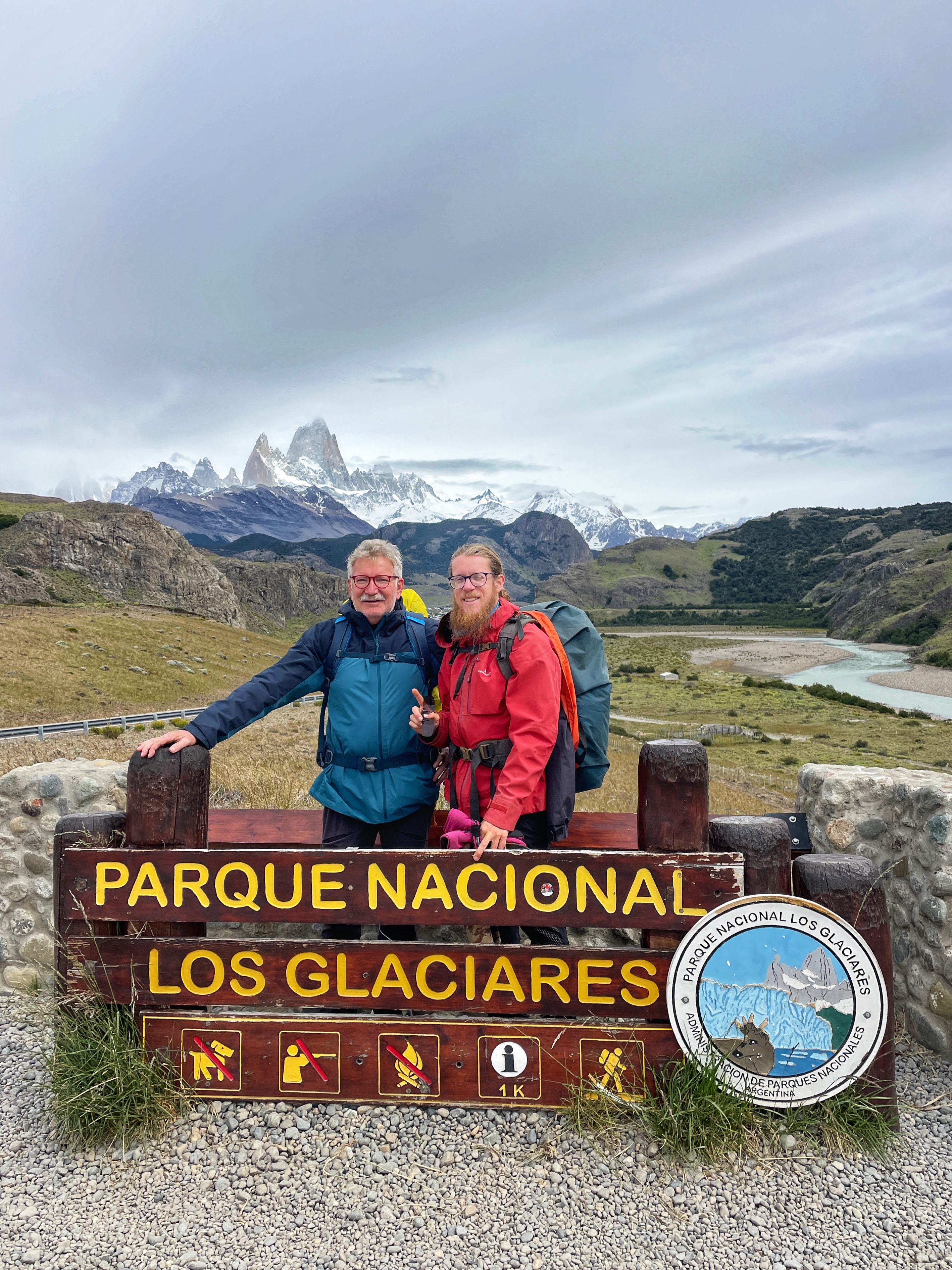
The days continue between highs and lows. Once Aeolus forces me to surrender, it blows so hard that it prevents me from continuing. So it is true, the wind can stop a boy pushing a 50kg buggy. I find shelter under a grid that cuts across the road, I wait for the gusts to diminish to pitch my tent, and it is only at sunset that I manage to pitch it. In a few days I will arrive in Chaltén, I just have to hold on and walk with the wind howling in my ears. I am amazed by the intensity of the air currents: for days and days they blow incessantly, without any respite. At night they break my sleep and during the day they lower the temperature so much that I have to wear gloves and a woollen balaclava. Dust irritates the eyes and ends up in the food, every movement is done with caution and even - natural, but one has to take notice - even taking a piss becomes a balancing act. Despite the exhausting conditions, the Pampas desert is a perfect place to think. Once you have absorbed the cry of the wind and its slaps, there are no distractions: with touch, sight and hearing overwhelmed by the air, the mind turns inward and probes the depths of the soul on a journey longer than the world. What is boredom when every minute is devoted to a different thought? This is the treasure of solitude: oneself.
I arrive in Chaltén almost with melancholy, at the end of the fourteenth day. I am physically exhausted but in my head and soul there is peace. Who knows, maybe a few more days would have done me good... I pitch my tent in a campsite and spend the first two days absorbing energy from food. Eating is one of the most satisfying parts of a trip like this because I can gulp down quantities of butter and dulce de leche sandwiches without restraint! While I replenish my fat reserves, I gather information about the pueblo. Chaltén enjoys a skyline that is very famous in mountaineering circles, formed by unmistakable granite mountains: Fitzroy, Poincenot and Cerro Torre are some of the most evocative names for mountain lovers.
There are several trails that lead to explore the sharp spires and stretched glaciers beneath them. Those to Fitzroy and Torre can be done in a day, while some more challenging ones require a minimum of preparation. One of these is the Vuelta Huemul, a four-day counter-clockwise circuit around the peak that gives the trek its name, Mount Huemul. The route is simply astonishing: for the first time I walk on top of a glacier, camp in a bay full of icebergs and, as if that were not enough, cast my gaze over the legendary Campos de Hielo, an immense expanse of ice of an impenetrable nature . The Campos exert an evocative fascination of the untouched on me because only one expedition has managed to cross them in total autonomy. Just one, in all of history, you understand? In Antarctica there must have been at least fifteen, not to mention the North Pole. The harsh weather conditions and largely unknown morphology make it one of the last untouched places left in the world. No scientific basis, let alone tourism, has succeeded in shattering its peace. It is an indescribable thrill to approach them and feel the power of its fifty glaciers welded together by thousands of years of isolation.
These are also the last days that I will be camping with the Manaslu. It seems a fitting farewell for the tent with which I have crossed Peru, Chile, the Atacama desert, the Carretera Austral, and trekked among ancient Inca ruins and marvellous snow-capped Cordilleras, up to 5000 metres. Together with the Ferrino Team we decided to let it rest and replace it with a 'youngster', the freshman in the 4-season tent range: the Namika 2. How to get it all the way to Argentina? You won't believe it, but it was even brought to me by... my father! In fact, we had decided months ago that he would do a piece of the round-the-world trip with me and fixed the stretch in Argentina, between Chaltén and Calafate. Taking advantage of his arrival, he would bring the new tent along with some spare parts, both for me and for Ezio: after 14,000km, my companion needed a new pair of tyres.
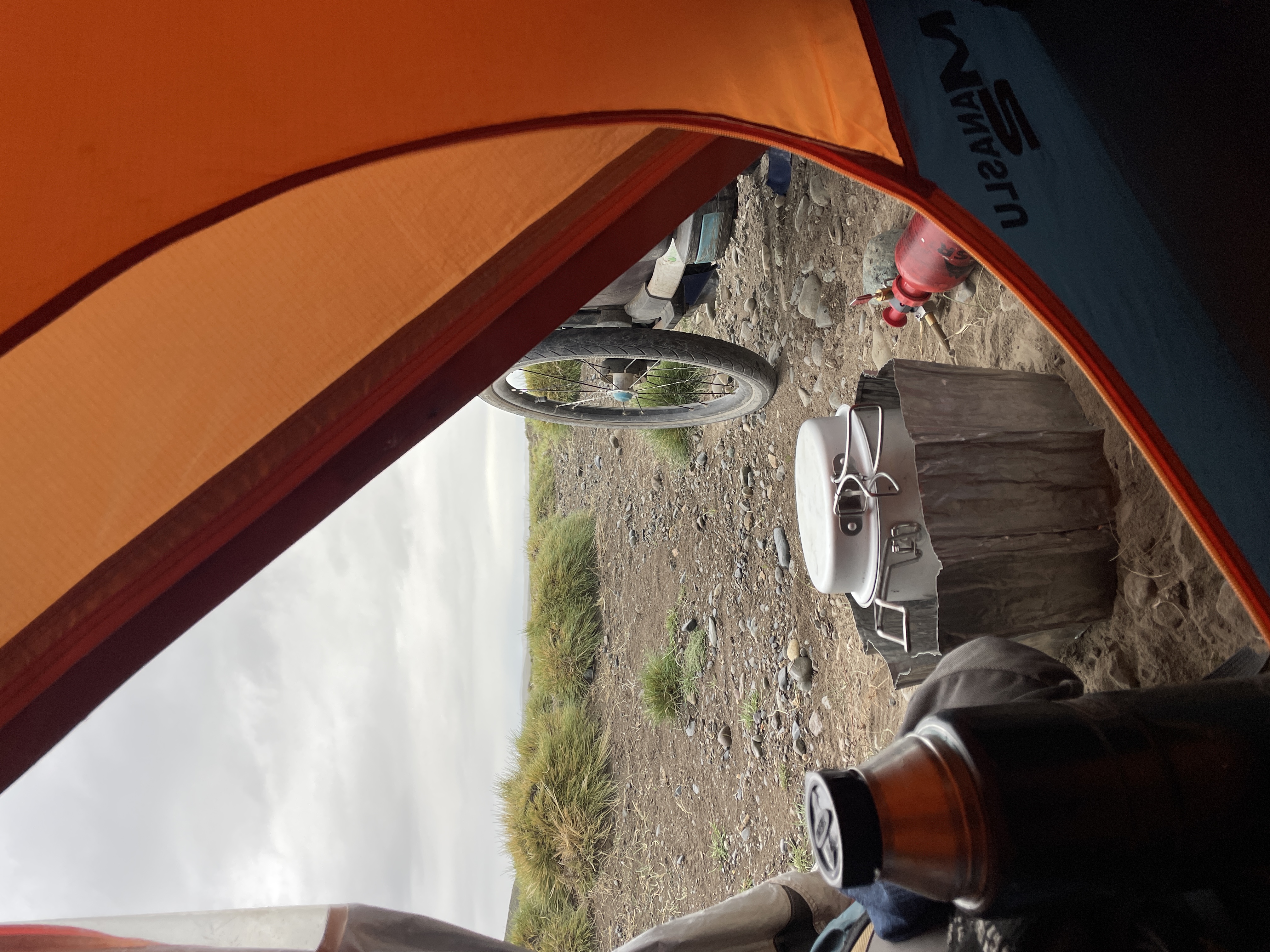
And so, on the third of December 2022, at the Chaltén bus station, I embraced my father once again. He had come from a journey of almost three days but was not the least bit tired. In our family we call him the bionic man because of his infinite energy and in the following days he immediately showed the grit he had brought from home. To be honest, his strides left me behind most of the time and I found myself laughing to myself as I trotted after his silhouette to try and catch up with him. After a few days in the mountains, we took to the road again to El Calafate, the picturesque village. The first day since our goodbye to Chaltén fell on my birthday. Having Dad walk with me was the best present I could have dreamed of but, icing on the cake, in the evening we toasted in the tent with a Dalla Vecchia grappa, I think it was a Prime Uve. We passed the cordial patiently sipping it, savouring the aromas of home with the calm of those who can appreciate the small things in all their significance.
We travelled about twenty kilometres a day for the first four stages, camping along the side of the road or in improvised situations. Once we received hospitality in an Estancia, one of Patagonia's historic farms devoted to raising sheep - sheep for wool and lambs for meat. Romero, our host, placed us in a cubicle with a bed and two mattresses, while a pre-war wood stove served as a heater and cooker for hard-boiled eggs, lentils and rice, the basis of our diet. To our surprise and amazement, Romero also gave us a bottle of red wine - I am a teetotaler, he said, handing it to us. Dad and I looked at each other with a sly smile but decided to open it when we took a break.
Three days later it was time to uncork it. We had arrived at another Estancia, La Leona, which in time had also become Paradero - a resting and provisioning place where it was also possible to stay overnight. From the walls, the eyes of climbers who had entered the legend of mountaineering for having opened routes on FitzRoy and Cerro Torre looked at us solemnly. The gaze of Casimiro Ferrari and the Ragni di Lecco had been staring at us from 1974, the year in which they first placed their flag on the summit of the Torre. After the first few days of breaking in, it was time for the bionic man to go wild. We had covered half the path and had another 110km left to El Calafate, which I estimated we would cover in five days. We only needed three. To my surprise, the wind left us alone and we managed to grind out 34 and 37km stages. The Pampas offered fortuitous encounters: with other people, such as Oscar, a road maintenance man who invited us to his home to watch an Argentine football game; and with dozens of animals, from guanacos gracefully leaping cattle fences to desert foxes and condors.
We arrived in El Calafate after nine days of walking; we had covered 213km. I was amazed at how easily Dad had slept in the tent; it had taken me weeks to get used to it! It was nice to look around the camp and see him huddled inside my old house. The new one, the Namika, had a more slender silhouette and sturdier poles, judging by the weight of the pre-connected tubes. Slats raised off the ground ensured optimal air recirculation, so condensation was limited to a minimum - to this day, after the first twenty nights, I have never found a drop of moisture when waking up. Installation was done directly by threading the supports onto the waterproof sheet, without therefore retrofitting it onto the basin, which was already secured to the outer wall by eyelets. Besides being functional, I thought it was also... beautiful! I can't explain it, but maybe after so much time spent sleeping under the stars, my portable house had to look good too, and this one really made my eyes sparkle.

We stayed in Calafate a few days and before Dad left we went to see Perito Moreno, one of the glaciers that form the Campos de Hielo. The Perito is perhaps the most famous and certainly the most photogenic: from the panoramic walkways stretching out in front of it, it is possible to photograph it from all angles, capturing the blue shades of the ice and the walls up to 70 metres high. With good reason, the site is inscribed on the Unesco list of World Heritage Sites. The next day was time for goodbyes. I would stay one more day, just long enough to do the shopping and cook the food for the next stage. In seven days I would cover almost 300km and once again return to Chile for the last piece of the round-the-world walk in America. Direction? The End of the World.
Share this article
